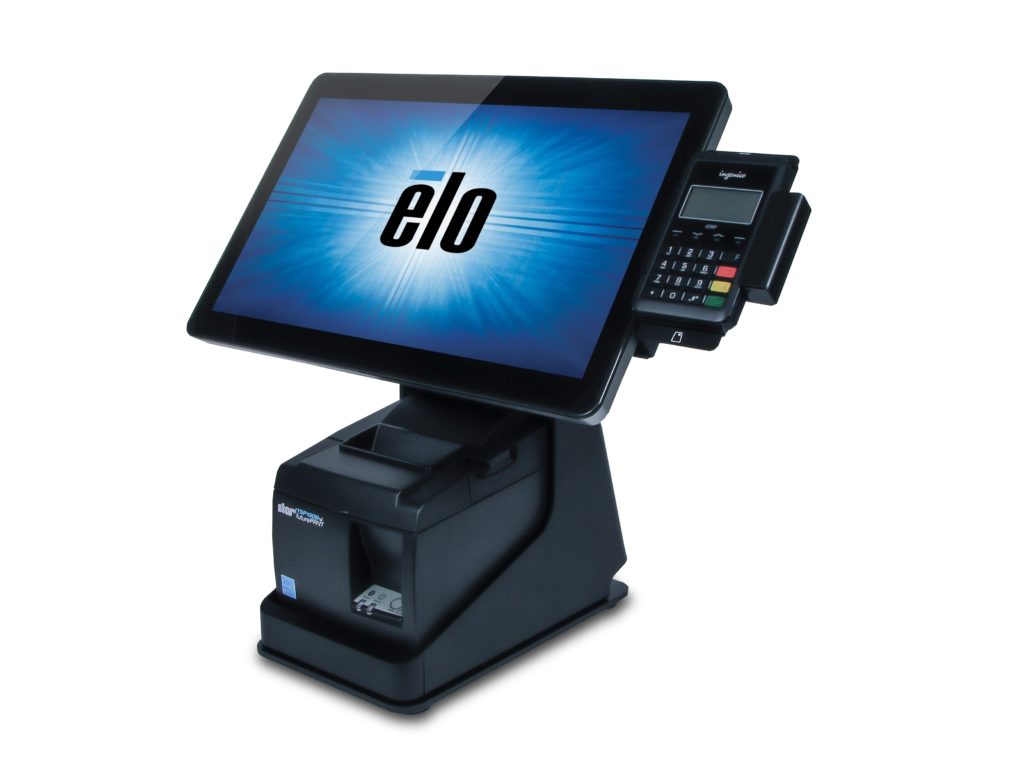MRM #RestaurantTech: GrowPods, ‘Uber-izing’ Call Centers and Voice-Activated Ordering at Wingstop
17 Min Read By MRM Staff
The intersection of hospitality and technology is evolving at a rapid pace. To keep a pulse on these trends, Modern Restaurant Management (MRM) magazine launched a MRM #RestaurantTech column. To submit items, contact MRM Executive Editor Barbara Castiglia at bcastiglia@modernrestaurantmanagement.com.
RRT Goes Virtual
Restaurant Revolution Technologies, Inc. (RRT), which provides order management, call center and technology solutions for restaurant operators helping them to manage and optimize their off-premises takeout orders, has completely moved its call center services to a virtual model.
We are ‘Uber-izing’ the perception people have, specifically our restaurant clients, on what call centers are and what they do by going virtual.
Unlike traditional call centers that operate in “brick and mortar” buildings with enormous fixed costs and limited recruiting and scheduling flexibility, the virtual call center services offered by RRT allows for a more cost-effective and flexible model by utilizing highly screened and trained independent agents that are operating during the hours set by the call volumes of the restaurant client. The virtual call center model also provides an exceptional customer experience and empowers local restaurant management to focus on their core business – dine-in guests and the in-house customer experience. The move to an “all virtual” call center model began in early 2016 as RRT gradually transitioned existing clients from the more traditional call center format over the course of the year while also adding newly partnered restaurant clients to the new virtual model.
Because of the move, RRT is able to recruit and hire virtual agents with experience in the Hospitality and Customer Service fields who are accustomed to handling the unique demands restaurants face with their customers. As such, RRT has progressively moved away from hiring people with traditional call center backgrounds to hire people who clearly understand that their roles are not as “order takers” but as brand representative servers that enter into “conversations” with customers to build relationships on behalf of the restaurants.
“A virtual call center model allows RRT to be nimble and agile to our clients’ daily ebbs and flows of their takeout business, while greatly improving the overall service levels provided,” said David Schofield, CEO at RRT. “Our call center hallmarks versus our competitors has always been to consistently remain sensitive to the quality of service we provide as well as remain a cost effective partner that infuses business rather than sapping it away from our partners. We are ‘Uber-izing’ the perception people have, specifically our restaurant clients, on what call centers are and what they do by going virtual.”

Additionally, the move to a virtual call center model also coincides with RRT’s new “Beyond Takeout” strategy and positioning unveiled earlier in the year. The core values of the new “Beyond Takeout” strategy:
- Reinforces RRT’s ceaseless devotion to client service that delivers an enhanced guest experience for off-premise takeout guests.
- Underscores RRT’s commitment to innovation by delivering superior ‘hi tech and hi touch’ solutions designed to increase revenue for restaurants that are revolutionary to the industry.
- Supports RRT’s strategic positioning within the industry of handling 100% of off-premise opportunities for its clients, going well “beyond” just focusing on online and mobile ordering.
- Provides six unique service lines, which include call center support, online ordering, mobile ordering, handling larger catering orders, outbound business development services and offering a customized loyalty platform.
- Uses the most advanced technology within the industry with its patented Order Management software and fully integrated solutions to greatly improve the customer experience while providing a strong ROI to its RRT’s clients.
- Binds RRT’s current solutions and services within the same marketing umbrella offered both a la carte or as a fully integrated suite.
“Our virtual call center model reinforces our ‘Beyond Takeout’ strategic plan of action by clinging to innovation and remaining headstrong with quality of service,” added Schofield. “We’ve continued to advocate both internally and externally that ‘Beyond Takeout’ is essentially the centerpiece of what we do as a company on a daily basis for each client and with every project we undertake – including our virtual call center. We continue to push the innovative curve to not remain complacent in what we do or how we are perceived to provide substantial value to our client partners.”
Dinova’s Marketplace Expands
Dinova, the only proprietary marketplace exclusively focused on connecting expense account diners to quality restaurants nationwide surpassed $6 billion in business dining spend influence. Dinova’s marketplace increased steadily in 2016, which has resulted in this huge milestone for the company at the onset of 2017. Like other successful internet marketplaces, such as Airbnb and Uber, Dinova is quickly penetrating this burgeoning market and is progressing into a successful mid-size growth company.
“I am ecstatic that we are able to start 2017 with such an incredible announcement,” said Vic Macchio, CEO and founder of Dinova. “As we continue to forge ahead and add more restaurants and top corporations around the country, we continue to provide a unique marketplace that is only available by joining Dinova.”

Dinova has also continued to add diverse restaurant concepts to its marketplace throughout 2016 and starts 2017 with three new groups including Snarf’s Sandwiches, the Fine Indian Dining Group, and the movie theater microbrewery, Flix Brewhouse.
Snarf’s Sandwiches was founded in 1996 in Boulder by Jimmy Seidel and has expanded to more than 20 locations in Colorado, Chicago, St. Louis and Austin, Texas.
“We’re excited to be partnering with Dinova in order to reach a new audience segment including business travelers and corporate diners, said Jill Preston, Director of Marketing at Snarf’s. “We know this is an influential and important audience, and through Dinova’s network we look forward to increased traffic, sales and catering opportunities.”
Executive Chef and Owner of Fine Indian Dining Group, Hemant Mathur, spent decades cultivating recipes and dishes for restaurants. In 2015, he joined the Fine Indian Dining Group, founded by Shiva Natarajan, in New York with Indian dining concepts such as Chote Nawab, Dhaba, Haldi, and Sahib, all found in New York.
“Dinova’s marketplace provides our restaurants with that extra enhancement to reach a target audience of business diners nationwide, which also complements our current marketing efforts,” said Hemant Mathur, Executive Chef and Owner of Fine Indian Dining Group. “Participating in Dinova’s network is an important resource that gives us access to an influential customer segment which is vital to expanding our reach and increasing traffic at our restaurants.”
Flix Brewhouse is the only movie theatre in the world to incorporate a fully functioning microbrewery. Flix currently offers 33 stadium seating “dining rooms” with high-definition cinema projection and sound technologies, wall-to-wall curved screens, cushy high back chairs, and its revolutionary Easy Glider movable table top.
“Dinova’s marketplace has been a nice addition to our sales mix, particularly with business travelers. The incremental revenue associated with the traffic driven from Dinova’s network has been a valuable inclusion to our current sales and marketing program,” said Greg Johnson, Director of Sales and Marketing at Flix Brewhouse.
Wingstop Launches Voice Activated Orders
Wingstop, Inc. with more than 900 locations worldwide, became the first restaurant brand to offer voice-activated ordering with menu item customization through Amazon Alexa. Wing fans can now feed their craving for flavor by speaking simple command prompts that will activate Amazon’s cloud-based voice service, Alexa, to place a new order, re-order from favorite and recent orders, process payment and provide estimated pick-up times.
“Wingstop is digitally driven and the launch of voice-activated ordering is the next step in our commitment to providing the most convenient, engaging, and cutting edge brand experience for our fans,” said Stacy Peterson, CIO of Wingstop. “We are proud to be working with Amazon to enable Alexa ordering of Wingstop Combos, as well as re-orders and favorite orders, plus the ability to customize flavors, dips and sides – making ordering your favorite wings easier and more fun than ever before.”
Amazon Alexa users can activate a Wingstop order by using simple vocal prompts such as “Alexa, ask Wingstop to order wings”; “Alexa, ask Wingstop to order favorite”; or “Alexa, ask Wingstop to order an 8 piece classic wing combo with lemon pepper, fries and ranch.” To get started, Alexa users must enable the skill in the Alexa app and then link their Wingstop account. The entire ordering process can take place within the Wingstop skill for Alexa. Customers can also manage favorites, set order locations and save payment information for even easier ordering on their next go-round.
“Wingstop and Amazon are two brands that believe in leveraging technology to create powerful connections with their customers,” said Rob Pulciani, Director, Amazon Alexa. “We’re thrilled to be working with Wingstop to launch the first full-menu voice-activated ordering functionality, allowing customers to avoid the line by ordering through Alexa.”
Voice ordering with Amazon Alexa is the latest extension of Wingstop’s preexisting digital ordering platforms. A digitally-driven, innovative restaurant brand, the company debuted the industry’s first-ever multi-channel social ordering capabilities on Facebook Messenger and Twitter in June 2016. The omni-channel text and voice conversational technology, powered by Conversable, Inc., allows customers to start an order, customize it, and enjoy easy check-out without ever leaving their preferred social media channel or Amazon Alexa device.
Digital orders accounted for 19 percent of total orders for Wingstop, as of the end of the Company’s fiscal third quarter. In addition to voice ordering via Amazon Alexa, and social ordering on Facebook Messenger and Twitter, Wingstop fans can also place orders online or via mobile device or by downloading the Wingstop app.
Bridg Unveils New Marketing Platform
Bridg, which leverages big data to drive precision marketing campaigns for restaurant brands, unveiled its new marketing platform that bridges the gap between brick-and-mortar restaurants and retailers, allowing them to identify and connect with individual customers within the online universe, for the first time. Restaurant brands such as Papa Gino’s, Veggie Grill and Hungry Howie’s are leveraging Bridg’s enhanced digital marketing platform to understand their customers, predict purchase behavior, and transform their businesses.
“Digital companies like Amazon have long demonstrated the effectiveness of precision marketing through online and social media, but it’s been impossible for restaurants and retail operating in the brick-and-mortar world to duplicate those capabilities,” said Amit Jain, founder and chief executive officer of Bridg. “Now, for the first time, Bridg is enabling restaurant and retail chains to deliver personalized ad messages directly to individual customers across mobile, social, email, SMS and display media. We can decipher new from loyal customers and speak to each of them in unique ways. Likewise, we can reach lapsed customers with a specific invitation to entice them back before they’re lost forever. The results are immediate, measurable, cost-effective and transformative.”
Papa Gino’s Pizza, a regional pizza chain based in Boston, MA, called on Bridg to help re-engage lapsing customers and drive them to its new online ordering platform. Bridg’s Digital Marketing Platform analyzed the individual buying patterns of Papa Gino’s customers and identified those most at risk of defecting, in real time, as soon as they began to lapse. Bridg served targeted ads to those customers across multiple of channels, producing immediately positive ROI. “Bridg helped us engage and recover lapsing customers before we lost them to our competitors, producing a meaningful ROI on our marketing spend in a short amount of time. They also accelerated the adoption of our new online ordering platform. Their platform allows us to target in ways that are not otherwise available,” reported Peter Cronin, Senior Vice President of Brand Strategy at Papa Gino’s.
Veggie Grill called on Bridg to help support their VG Rewards App download campaign through display advertising. Bridg’s Digital Marketing Platform created an audience segment of non-app guests and reached them through Facebook and a variety of other digital channels. “Bridg allowed us to capture new guest emails and immediately convert them to our mobile app. This campaign demonstrated a low cost per lead,” reports Leah Smith, Sr. Vice President of Marketing.
Hungry Howie’s leverages Bridg’s Digital Marketing Platform to reactivate lapsed guests and to increase the frequency of their visits. “Understanding buying patterns at an individual level enables Hungry Howie’s to connect with our customers much more effectively at a one-to-one level,” says Rob Elliott, Executive Vice President of Strategic Marketing.
Key components of this platform include:
- Omni-Channel Messaging: With Bridg, restaurants and retailers now reach customers across all digital channels, including display, mobile, social, email and SMS.
- Enhanced Customer Relationship Management (CRM): Bridg aggregates all customer data into one master CRM, combining customer transaction data with identities of unique individuals.
- Lifecycle Marketing Engine: By applying predictive intelligence, Bridg is able to automate and change marketing campaigns based on real-time changes in customer purchasing behavior.
- With this technology, Bridg enables restaurant and retail marketers to identify individual customers, segment their buying patterns, and then deliver personalized advertising messages across social media, web and mobile channels. The result is increased customer retention and sales growth by engaging specific customers within the digital news, entertainment and social media channels they love.
- Bridg harnesses the power of customer data collected in a restaurant or retail chain’s point-of-sale (POS), loyalty and other platforms to understand the purchase behaviors of individual customers, then applies proprietary predictive analytics to model future behaviors and develop one-to-one marketing messages that improve loyalty, stimulate action and drive results. With Bridg, these highly personalized messages are then delivered directly to customers within the mobile and online channels where they live, work and play.
Marqii Debuts
Marqii, designed to be the first mobile business platform, using location data to make direct-to-consumer advertising of specials and promotions affordable and available to local establishments launched.
“Marqii is the digital upgrade and compliment to the marquee/chalkboard street sign for local businesses to promote daily specials & happy hours,” said Avi Goren CEO and Co-Founder of Marqii. “Local bars, restaurants and other businesses generally can’t afford conventional advertising in newspapers, TV or radio. Marqii gives businesses the power to reach their neighborhood mobile traffic, increase foot traffic and provide real-time incentives.”
Traditionally, small local businesses have relied on coupons, costly mailers and collateral materials to entice customer interest with limited returns. While some have attempted to create digital incentives, the process often becomes too complicated for the average business owner to operate and maintain. For just $2-$4 per day, Marqii will deliver marketing messages to potential customers looking for a special whether it’s a happy hour, 2 for 1 tacos, or even a steak dinner when and where they are searching.
The platform is designed to simplify the creation and distribution process of compiling and categorizing specials letting users seamlessly find exactly what they’re looking for based on location. The cloud based API connects with 70+ online publishers including Facebook, Google Plus, Foursquare, CitySearch, Yahoo!, Yellow Pages etc. to showcase each special in real-time. Additionally, each establishment’s core location data such as name, address and phone number will be accurately populated on each publisher allowing cross platform consistency.
“Marqii’s mission is to create a business-friendly ecosystem built on results and immediate solutions,” said Goren.
Beginning in January 2017, local businesses in the New York City area will be able to sign up for the platform. Marqii will offer a special promotion that encourages everyone to ‘Respect The Special’. The first 50 signups will receive free service for 12 months, and the next 100 will receive 50% off the annual fee with a special promo code. Additional cities will be available in the coming months. For more information, visit www.getmarqii.com.
Fishbowl Integrates with Android Pay
Fishbowl, a customer engagement platform provider for the restaurant industry, has integrated with Android Pay to provide seamless loyalty, coupon, and promotions management for restaurant industry clients.
The collaboration between Fishbowl and Android Pay enables restaurant brands to push personalized, 1:1 coupons and offers and maintain loyalty within guests’ personal wallets, and to notify guests of offer availability when within proximity to the valid location. The integration empowers restaurants with the opportunity to influence and reinforce brand-specific decision making outside the restaurants’ four walls while ensuring recognition and reward for loyal guests. Through Fishbowl’s rich analytics, Google can attribute ROI and incremental consumer behavior associated to Android Pay as a distribution channel.
“Fishbowl’s promotion and loyalty management solutions enable our clients to strategically leverage coupons and offers that are relevant and timely without cannibalizing sales contribution,” said Dev Ganesan, CEO of Fishbowl. “Integrating with Android Pay is a requirement in today’s mobile-first world. It offers restaurant goers a consolidated, personalized view of offers across retailers and restaurants. It also provides operators another content distribution channel, specifically virtual loyalty cards and promotional offers. It’s a win-win for both consumers and retailers.”
“Fishbowl has a large restaurant client base and, as such, a huge swath of restaurant guests,” said Jack Connors, Head of Commerce Partnerships at Google. “As payment becomes more mobile, the opportunity to provide a cohesive wallet experience is obvious. Through integration with Fishbowl, restaurant brands can issue coupons and loyalty cards while ensuring a seamless experience at point of purchase, helping us to validate Android Pay as a viable distribution and payment platform.”
Fishbowl ingests and analyzes vast amounts of structured and unstructured data from a myriad of sources, including POS, eClub, SMS, mobile, online ordering, reservations, loyalty and more, to uncover critical guest insights, desires and preferences and identify strategies to execute data-driven decisions and engage with guests in a more personal, relevant, and effective manner via marketing automation. Fishbowl’s highly scalable, SaaS platform ingests data from myriad sources to uncover insights that can be leveraged across integrated marketing channels and is used by more than 70,000 restaurant locations.
GrowPod Offers Fresh Produce
GrowPod Solutions, a developer of technology-enabled automated indoor farms has a turn-key system to provide fresh produce, vegetables and herbs to the restaurant industry.
The highly engineered, transportable agricultural production environment enables companies, communities, non-profits, universities, restaurants and entrepreneurs to grow a wide variety of fruits, vegetables, and cash-crops virtually anywhere.
The patented system is built into a standard size shipping container, and can be placed in almost any environment. The GrowPod™ system can be equipped with highly advanced sustainable technologies, creating a perfect growing environment with almost no energy requirements.
GrowPods™ are outfitted with a proprietary, customizable rack system, which can contain any number of vertical or horizontal production and propagation levels. Each level contains an appropriate number of crop-specific LED fixtures. By optimizing the wavelengths, the LED lights in the GrowPod™ container can improve the photosynthesis response, allowing controllable, predictable and robust growth, resulting in higher yields in a shorter period of time than conventional production methods.
The processes of GrowPod™ container production are controlled and monitored by a specially designed PC-based sensor and control system, allowing monitoring 24/7 from any device.
“Now, a restaurateur can grow his or her own fresh produce and herbs right in back of the restaurant,” said George Natzic, President of GrowPod Solutions. “Imagine the customer’s delight when they realize that the delicious food they are enjoying was literally picked moments ago, at the peak of freshness.”
Elo Introduces Combo POS and Kiosk
Elo, a supplier of touchscreen computing solutions, introduced a commercial-grade mPOS system that flips between point of sale and self-order kiosk. Elo has combined peripherals—from Star Micronics, Epson, Honeywell, Verifone and Ingenico—with an mPOS platform designed for retail, hospitality, medical and entertainment venues, and any environment with interactive customer transactions. The mPOS system is based on Elo’s I-Series POS computer available in 10” or 15” Android or Windows commercial tablets. The innovative system integrates a standard 3” self-cutting printer, 2D barcode scanner, and EMV cradle for a built-in look using commercially available peripherals from leading brands. The touchscreen tablet can seamlessly flip from associate-facing traditional POS to customer-facing self-service ordering. A printer and EMV may be placed in associate-facing or customer-facing orientations depending on application. Elo’s new mPOS system is available for order today.

“Demand for self-service is growing, and retailers are looking for practical ways to leverage popular point of sale peripherals. Our customers will love the simplicity, practicality, and aesthetics of this new platform,” said Craig Witsoe, CEO of Elo. Adds Sonal Apte, senior director of product management at Elo, “Retailers can instantly transform a traditional POS station into a self-service countertop kiosk with the new Elo mPOS integrated platform. We’ve designed in solutions from Star Micronics, Epson, Honeywell, Verifone and Ingenico to bring together the best of POS and self-service to empower retailers, restaurants, and entertainment venues to do more with less.”
GK Software Launches Mobile Customer Engagement
GK Software launched its Mobile Customer Engagement platform in the U.S. The GK Mobile Customer Engagement platform turns shoppers’ smartphones into a retailer’s ally by bringing a wealth of consumer-friendly capabilities to a retailer’s established Android or iOS mobile application. The simplicity of connecting the application to the retailer’s POS, ERP, CRM and other enterprise systems delivers rapid ROI with minimal business disruption.
The Mobile Customer Engagement platform’s white-label capabilities include:
- Self-Scanning Using Shoppers’ Smartphones: Consumers can use their smartphones as a self-scanning device to eliminate the traditional pain points of the checkout process. They can check in by using a QR code to connect with the store’s POS system, scan items as they go without associate support, and then pair with the POS at checkout to pay and complete the transaction. All of this is as secure and simple as using traditional mobile payment solutions widely available today, while utilizing the retailer’s current checkout infrastructure.
- Personalized Promotions: Through seamless integration with SAP’s ERP and hybris Marketing, or other existing enterprise systems, GK’s Mobile Customer Engagement platform leverages personal shopping history to provide unique offers to consumers as they browse physical or digital storefronts, anywhere and at any time. This includes location-based services that utilize geofences to deliver coupons and vouchers based on consumer location.
- Loyalty Programs: Digital loyalty programs deliver vouchers and rewards on the go, and can entertain campaigns across various suppliers. In tandem with personalized offers, integrated loyalty programs help provide a new level of excitement and value for shoppers.
- Award Redemption: Automated redemption of all relevant offers through a “one tap” process to enable identification of the individual shopper, redemption of ALL coupons, vouchers, points, etc., collection of new points and credits for future purchases, and the transmission of the e-receipt to the mobile wallet. This maximizes customer throughput for the retailer, and convenience for the shopper!
- Customer Data: The Mobile Customer Engagement platform allows retailers to understand real-time, in-store consumer behavior at the same level at which they track web store behavior. By analyzing in-store decision-making, retailers can better understand their consumers throughout the omni-channel journey, enabling them to improve operational and merchandising efficiency at every step during the path to purchase.
“GK Software is excited to bring our comprehensive suite of mobile capabilities to the U.S. retail market,” said Michael Jaszczyk, CEO, GK Software USA. “Engaging customers in-store via smartphones is a business-critical component of omni-channel retailing. Retailers can now empower consumers in new and exciting ways, while maintaining complete control through easy integration with their enterprise infrastructure.”
New Self-Checkout Concept
Diebold Nixdorf, a provider of innovative self-service solutions, is showcasing a new self-checkout concept for the retail market. At just under 10 inches (25 centimeters) wide, the new Extreme Self-Checkout Concept is just one and a half times the width of a dollar bill and fits perfectly in any environment. With the ability to serve as an automated teller machine (ATM), point-of-sale (POS) terminal and a self-checkout unit, the concept enables an unprecedented level of consumer convenience by connecting the physical and digital worlds of shopping to create a seamless end-to-end experience.
By accepting cash, card and contactless payments, the Extreme Self-Checkout Concept enables retailers to meet the needs of today’s consumers while driving the future of connected commerce. Additionally, the concept’s extremely small footprint enables retailers to free up valuable floor space. The addition of an EMV chip reader further eliminates the risk of card fraud by exclusively reading the cards EMV chip versus the entire magnetic stripe.
Working together with Diebold Nixdorf’s TPiSHOP mobile application, retailers are able to connect the entire shopping experience for consumers beginning at home in the planning phase. Consumers are then able to use their retailer’s mobile app to build lists and receive suggestions on the fastest route through the store, personalized ads and purchase recommendations based on their location. As the consumer moves through the store, they simply scan the items they wish to purchase using their mobile device. Once complete, the consumer can bypass traditional self-checkout lines via the Extreme Self-Checkout Concept and leave the store. Additionally, the flexibility of the concept enables retailers to offer a wide range of additional services to consumers in a self-service environment such as cash back, check cashing and bill pay services.
“As banks and retailers seek to enhance consumer experiences, the line between physical and digital channels will continue to blur. This concept enables retailers to embrace the future of consumer transactions while utilizing their current infrastructure and technology,” said Richard Harris, Diebold Nixdorf vice president, design and new technology incubation. “Diebold Nixdorf is uniquely positioned to guide both retailers and financial institutions through this complex ecosystem to deliver the future of connected commerce.”
Culinary Software Adds Vendor Specific Invoice Export
Culinary Software Services, a provider of back-of-the-house technology for the foodservice industry, added a Vendor Specific Invoice Export into Jonas Club Software™. Jonas Club Management Software is the most widely used Club Management Software in the industry. Summary export interfaces for other accounting systems are already available, providing CorTec and ChefTec users powerful time-saving tools for tracking purchases and accounting.
Previously, all vendor invoices could be imported into CorTec and ChefTec and then re-entered into Jonas. The Export to Invoice for Jonas will now enableCorTec and ChefTec to electronically send both summary accounting information such as GL codes/Chart of Accounts as well as detailed item information. The export can also be automated for a full-cycle workflow from Ordering through Purchasing through Accounting.
Labott Relaunches Website
Labatt Food Service relaunched its website, www.Labattfood.com. At more than $1.3 billion in revenues, Labatt is the ninth-largest food distributor in the nation, primarily serving Texas, Oklahoma, New Mexico and Arizona. The company has some 1,600 employees, five major distribution centers – San Antonio, Houston, Dallas, Lubbock and Albuquerque — and a fleet of 250 trucks whose drivers deliver the right food at the right time to chain and independent restaurants, schools, military bases, hospitals and other customers.
The software drives everything – except the trucks, although every truck’s route is determined daily by a computer algorithm that knows where and when food is to be delivered and then instantaneously analyzes virtually every possible route that hits the best time windows for each customer. That single innovation, among many, has enabled Labatt to achieve 99 percent on-time delivery.

“We have just launched our third generation of web ordering and search software,” said Blair Labatt III, the company’s Director of Information Technology. “More than 89 percent of customer orders come directly to us electronically, from desktop computers, laptops, tablets and smart phones. Off-the-shelf technology doesn’t give either our customers or us the capabilities we all need, and that’s why we write our own software and then constantly update it.”
The rollout of the newest version of the website was seamless, he said, as customers quickly understood the advantages.
“For us, it’s all about helping our customers grow their business, whether it’s someone who owns one restaurant or a chain with 600 restaurants. That means accuracy, timeliness and information that lets them shop, buy name-brand products with reduced pricing and set a delivery time they can count on,” Labatt said.
“Our team has developed the business-to-business website for ordering food, software for warehouse robots that accurately fill and sort orders, a voice technology tracking system that essentially eliminates human errors in the warehouse, the truck routing software and a system we call ‘Where’s My Truck?’ so a customer can know at any time exactly where the delivery truck is and when it will get there,” he said.
“If you are running a restaurant or a cafeteria at a school or hospital or a huge military dining hall, you are dealing with constant demand, constant deadlines,” Labatt added. “You have to know that everything you need will be there on time, with the quality you want, and that the order will be complete. In the final analysis, our job is to make that happen with every single delivery.”
He manages a “skunk works” of some 20 programmers and 15 analysts who develop all the company’s software with the orientation of solving specific business problems in all areas of company operations – accounting, delivery, warehouse operations, inter-company logistics and customer services. The software team is recruited from universities large and small — Texas universities, Ivy League schools, top universities on the west coast and in the southeast.
“Our programmers are code writers who partner with analysts,” he said, “and together they look at a business problem and ask, ‘How can we make that better?’ We want our analysts to have the mindset of executives, with the ability to think strategically about issues, customer needs, trends – all the things that can have an impact on our customers.”
“Labatt is constantly looking at the entire food service industry and we bring that knowledge to bear for our customers, effectively becoming consultants,” he said. “We are watching trends, innovations, examples of what works and what doesn’t, whereas many customers necessarily have a total focus on their specific situation.”
“We’ve worked to build a culture here that challenges both our employees and our customers to reach their full potential,” Labatt said. “Our commitment to software development plays a huge role in our drive for operational excellence, and it’s a major reason not only for our growth but for our capacity to serve more customers.”
With antecedents dating to 1910, Labatt Food Service was founded in 1940. Now under third generation leadership, the company’s mission is to reduce the cost of food distribution and to grow the business of its customers.

